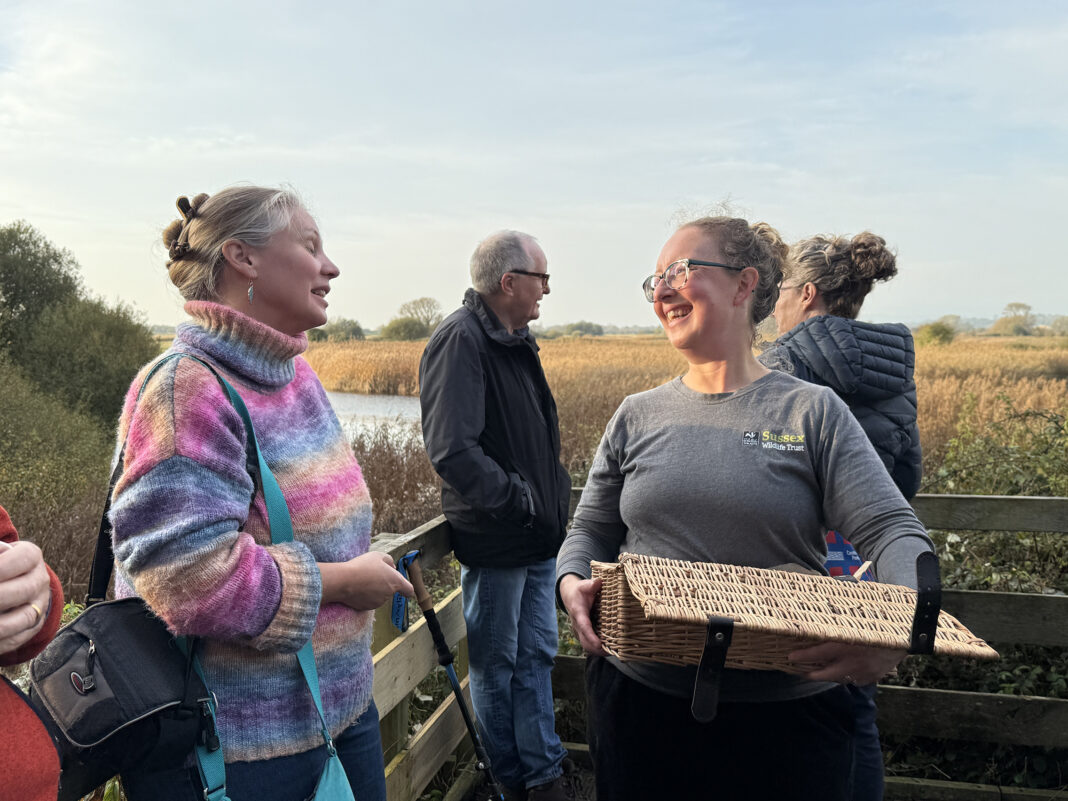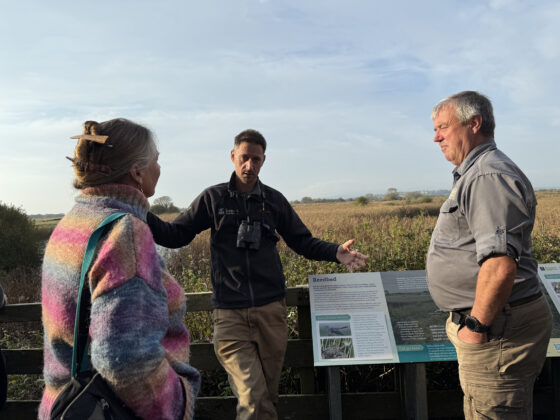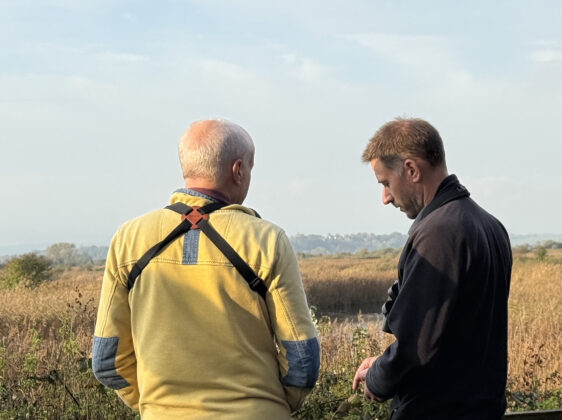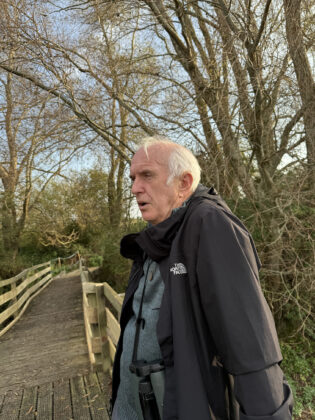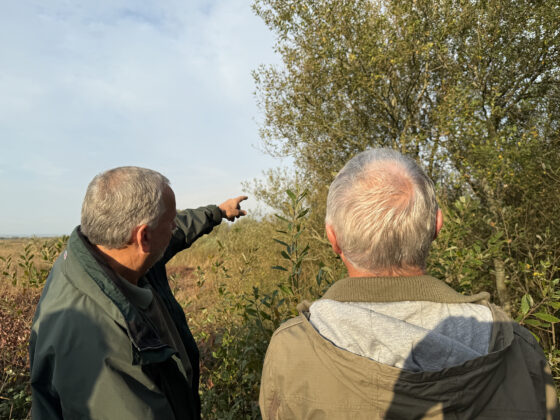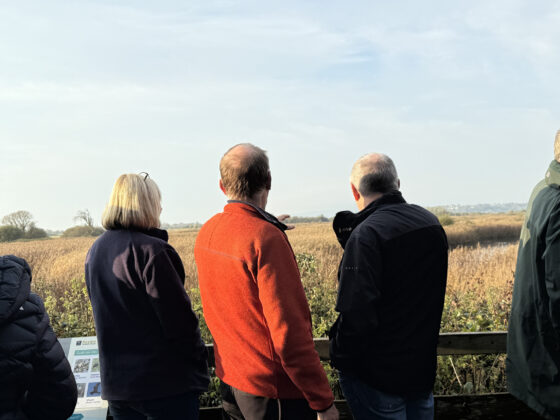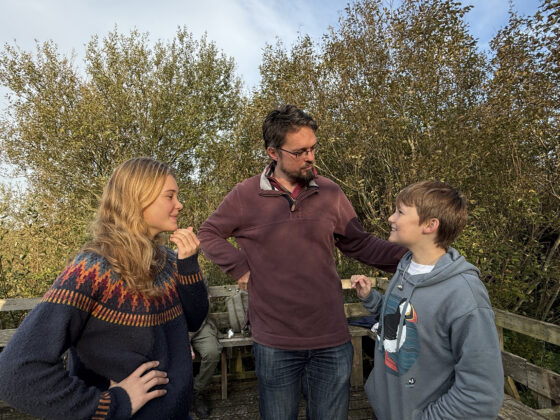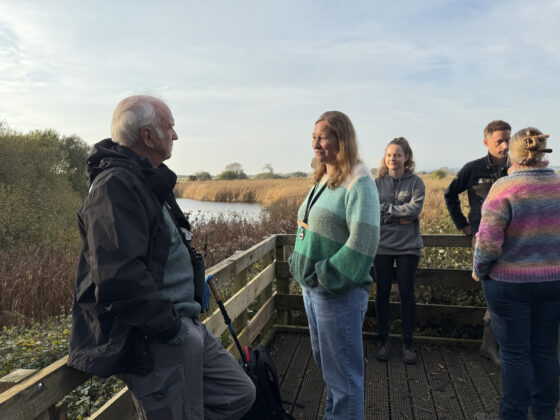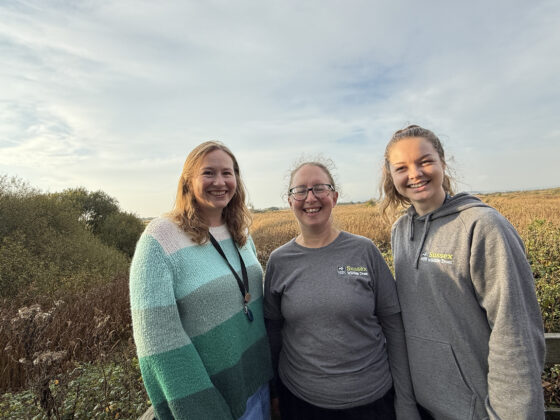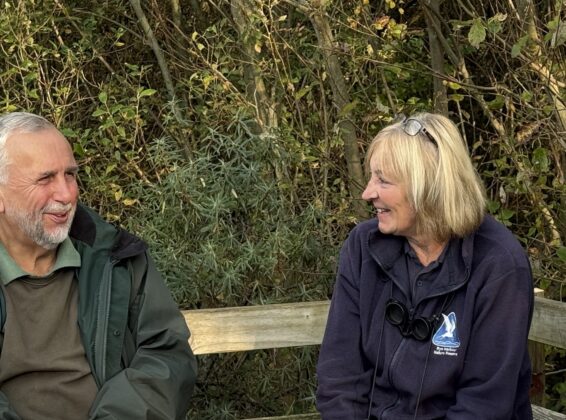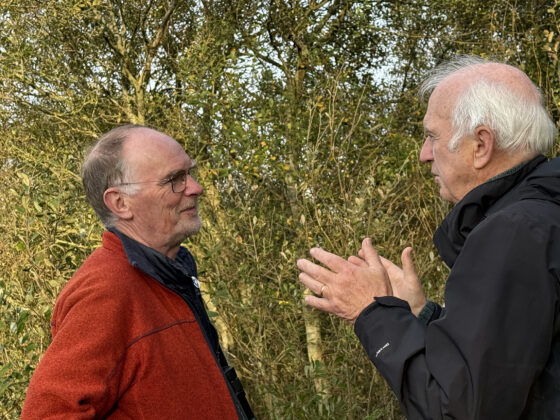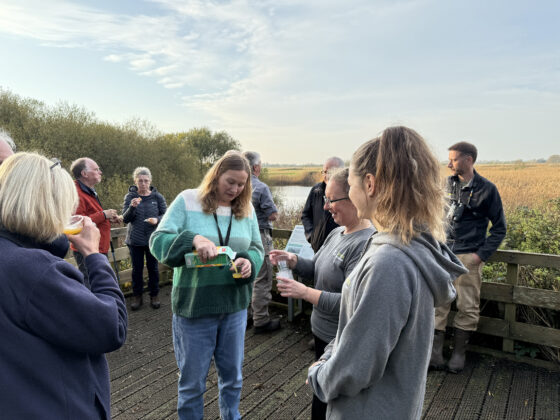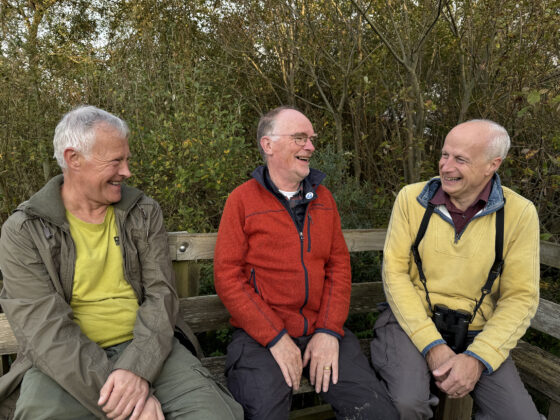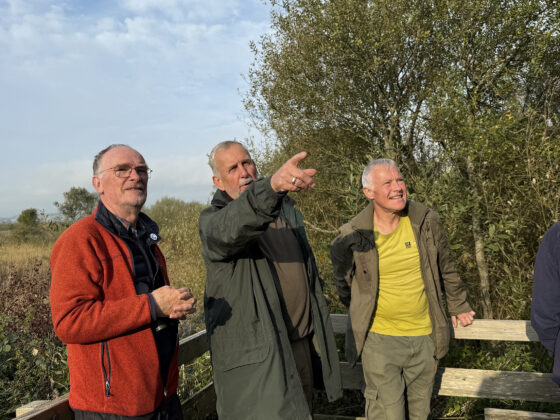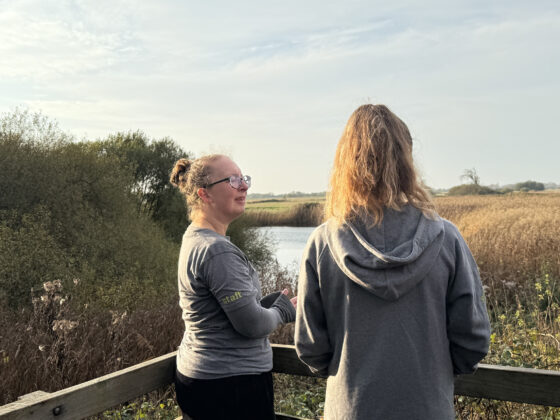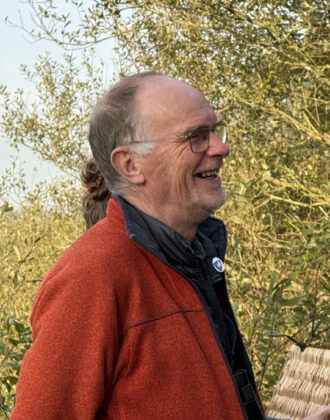The viewing platform at Rye Harbour Nature Reserve near Castle Water has re-opened after nine months of renovations and delays. To celebrate there was an early breakfast at the end of October, at the viewing platform, attended by volunteers and those key players who had enabled it to re-open, as it was much missed.
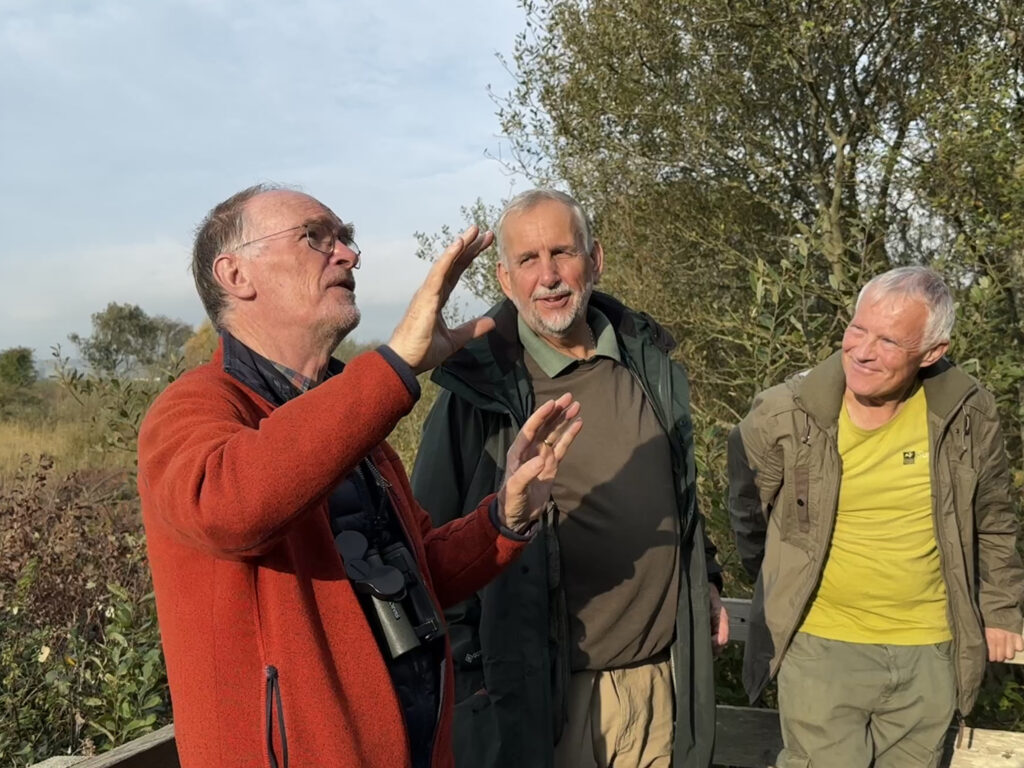
Managed by the Sussex Wildlife Trust, this popular platform offers views over the reserve’s rich wetlands, where visitors can observe marsh harriers, herons, and other local wildlife. Although it was initially scheduled for a quicker update, work was delayed because of bird-breeding season protections to minimise disturbance to nesting species. The platform provides an accessible space for birdwatching, enhancing visitor experiences at this ecologically significant site.
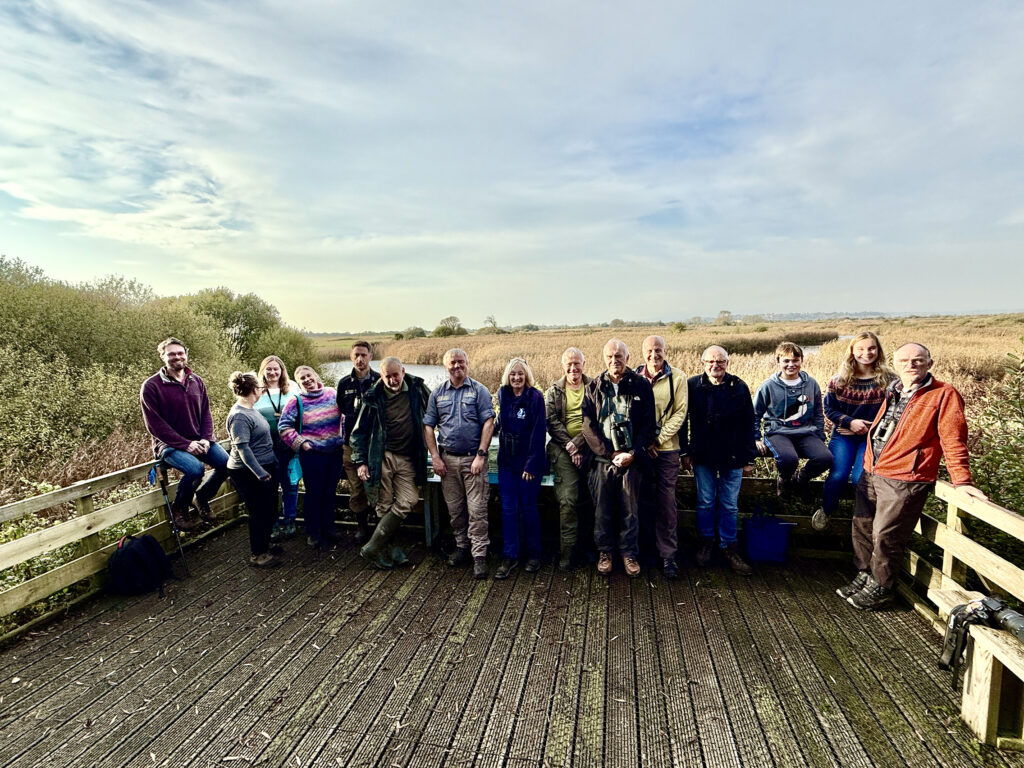
Read Laura Ross’s great article about the reopening:
Peter, a volunteer and Friend of the Reserve wrote: “Back before Covid, and indeed during Covid, the old boardwalk was suffering from the ravages of use and weather, and the fact that it was built in a reedbed and most of it stood in water. Ranger David King would regularly inspect it and identify which elements needed reinforcement or replacement, though it was clear that it had already passed its use-by date and would need replacement before too long.
“The engineering challenges of replacing substantial timbers underneath the structure, and sometimes the supports themselves, made for interesting jobs for volunteers. Some of the tasks seemed almost impossible without major dismantling, but somehow we found a way, with a lot of head-scratching and David’s vast experience. Implementing the repairs was also challenging, in a few feet of muddy water, with our tools and materials sitting on a raft underneath, as once dropped, they could be gone forever.
“When the green light finally came to replace the boardwalk, using a route already mapped out by David years before, there was a number of imperatives. One was to dismantle the old one safely and carefully, not merely to abandon it, or destroy it. Every single nut and bolt (and there were hundreds) was carefully removed wherever possible, and kept for later use, and every piece of timber was examined to see if it could be re-used or was too rotten. We were sometimes surprised to see how bad some of the timbers were, once exposed.
“The construction of the new boardwalk was meticulously planned by David, not only to ensure its longevity, but to engineer it in such a way that it was extremely safe, robust and would not suffer like its predecessor. This meant using a lot of heavy timber and bolts and structural reinforcement, as well as a sound base that would not rot.
“The new construction should have cost many thousands of pounds in materials alone, possibly tens of thousands (timber prices shot up after Covid). Because of David’s very careful planning and organisation, the vast bulk of the materials, timber, as well as nuts and bolts, were reused from the old boardwalk, saving a fortune. The use of volunteers was also a huge saving on a commercial contractor build, of course, but was also a great experience for all those involved. This was also appreciated by the Trust more generally as several trainees and other staff spent some time helping David and learning some of the basics and tricks of using various tools and techniques, invaluable for their own work in landscape conservation.
“It is great to see such a brilliant example of ‘re-purposing’ of the materials, and to have used it as a unique model for training, and it will no doubt provide a wonderful experience for the local birders. Meanwhile, the volunteers are currently engaged in another unseen aspect of David’s masterplan as they remove the willow close to the viewpoint to allow the reedbed to re-grow. This should encourage the bird-life in particular, to travel across in front of the concealed viewpoint toward the rest of the reedbed, providing some spectacular sightings.”
Image Credits: Kt bruce .



